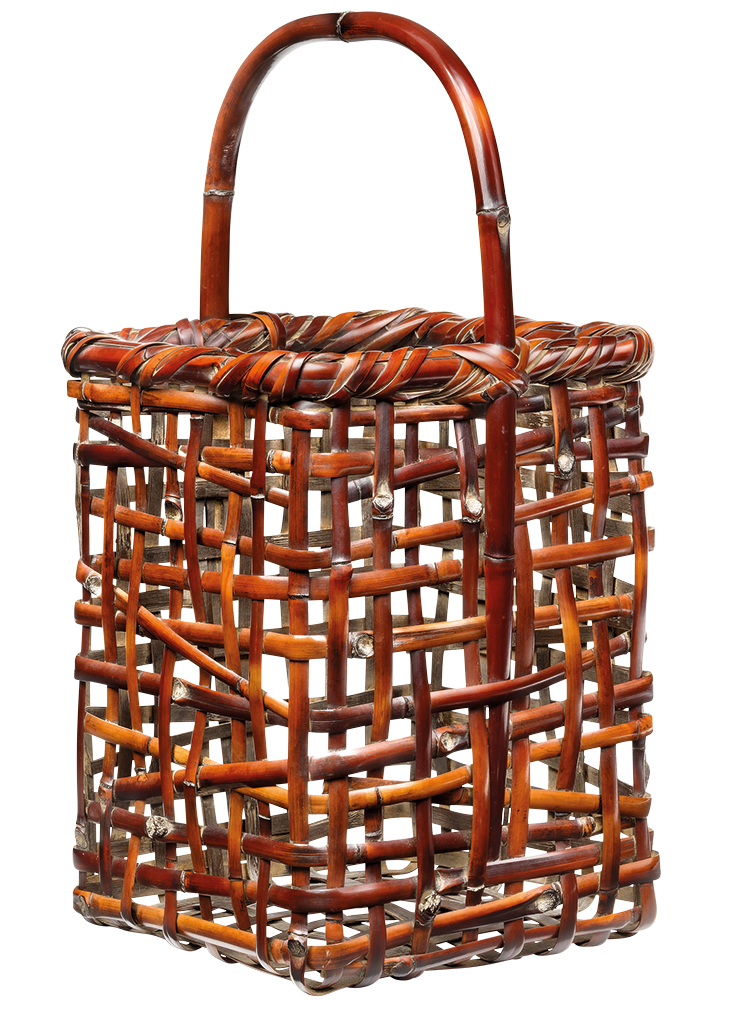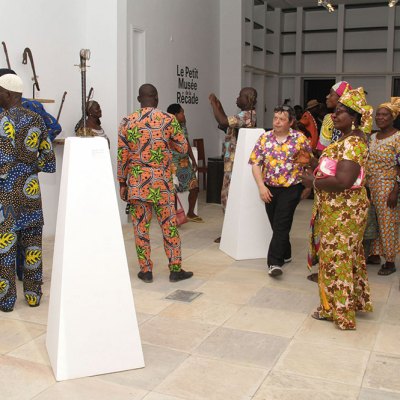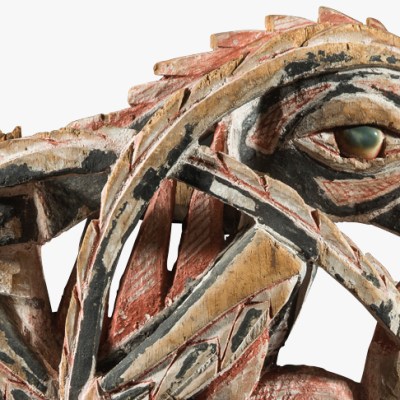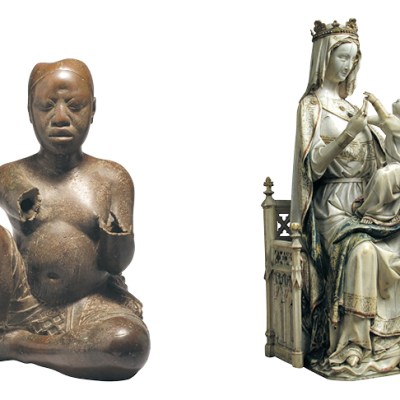One of the most agreeable features of Parcours des Mondes in Paris has always been that it takes place on the streets of Saint-Germain-des-Prés, as well as in its galleries. This is an event of encounters – between people, works of art and civilisations. Passers-by engage in window-shopping, and friends, colleagues and collectors hail one another and chat as they weave their chosen route between the galleries, or clinch deals in the quartier’s outdoor bars and cafés. This year, the plein air aspect of this annual jamboree may encourage those who feel less comfortable about attending an enclosed art fair; safeguards to protect visitors and exhibitors will be in place, with limited numbers permitted in galleries at any time and signage in the streets to direct visitors and manage queues. All gallery owners will be wearing face masks.
‘The situation in which we are placed relating to Covid-19 favours an unprecedented sharing of information online,’ explains this year’s honorary president, the young collector Norberto Izquierdo. ‘I would like to encourage the exchange of information, the transmission of our passion for arts from far- flung places.’ Citing the special atmosphere and opportunities of Parcours, he also hopes ‘to encourage people who don’t generally visit art galleries to do so’. Inevitably, perhaps, the 19th edition (8–13 September) presents slightly fewer exhibitors than usual, as some dealers have chosen to save their powder for another year. Even so, the collaboration of some 50 leading international specialists – including, at the time of writing, around 17 from outside France – ensures the event’s status as the most important ethnographic art show of the year.
Some have been planning their exhibitions for many months – or in the case of the California-based Oceanic art expert Michael Hamson, since before the 2019 edition of Parcours. ‘Pre-contact’ focuses on the most elusive and alluring category of Oceanic art – namely those pieces created before contact with the West (Galerie Amida, 5 rue Jacques Callot). Here is, as Hamson describes it, ‘sculpture carved with non-metal tools and with unmatched purity of intent and spiritual integrity’. Highlights will include a large – 68cm high – 19th-century Sepik River ancestral figure collected by the Society of Divine Word missionary Joseph Schmidt in the 1930s, and now on the market for the first time in more than 80 years (price on request). Another dramatic unveiling is a Boiken bust, also an ancestral figure from Papua New Guinea. This possibly earlier polychrome piece comes from the estate of the Australian artist and collector Leonard French (1928–2017), best known for his stained-glass works, and returns to the market after almost 60 years (€200,000).
Ancestral figure (19th century or before) Boiken people, Papua New Guinea. Michael Hamson Oceanic Art (€200,000)

Another early Oceanic highlight is to be found with the Brussels-based dealer Martin Doustar (Galerie Loft, 4 rue des Beaux Arts). This 65-cm long Maori treasure box, collected in 1847 but possibly half a century older, would have been hung from rafters and intended to be seen from below. Its underside is deeply carved with characteristic curvilinear designs, while the mother-of-pearl eyes of the head – presumably of an ancestor – gaze down (€48,000).
Charles-Wesley Hourdé (31 rue de Seine) has been gathering material for his show of art by the Dan people (of the Ivory Coast and Liberia) for more than a decade. It presents the whole gamut of Dan production, from masks, statues and ornaments to everyday objects. Illustrated here is a ceremonial spoon which would have been offered to one of the most hospitable women in the community – the size of its bowl a testament to her generosity – during a ‘merit festival’ to celebrate them. Anthropomorphic examples are the rarest and most prized, and here the dynamic posture and muscular masses are underlined by the engraved detail. The piece was deaccessioned from the collection of Josef Müller in 1978. Prices range from €1,000, for jewellery, to more than €300,000.
Anthropomorphic spoon (late 19th century), Dan people, Ivory Coast. Charles-Wesley Hourdé (price on application)

Also pre-contact, and by some time, is an evocatively weathered Dogon head from Mali presented by Galerie Monbrison (2 rue des Beaux-Arts). Almost half a metre high, it has been dated to around the 11th–12th century, and was first published by Jacques Kerchache in 1966. Abla and Alain Lecomte (4 rue des Beaux-Arts) present a similarly sized fetish of the Fon from the historic Kingdom of Dahomey (in present-day Benin), collected by Kerchache in the mid 1960s. This object is rare for nails are not often used by the Fon – although the metalwork here resembles more spatula than nail. Most arresting, perhaps, is the Mambila fetish statue from Nigeria, the figure fallen on its knees with a wide-open mouth. The cavity in its back must once have held fetish materials. Prices €3,000–€80,000.
Several dealers offer highly collectable works. Galerie Dodier (Galerie Meyer, 17 rue des Beaux-Arts) presents a group of some 50 loom pulleys from the Ivory Coast, priced at €1,000–€7,000. Galerie Vallois (41 rue de Seine) displays 200 brass gold-weights made by the Akan peoples of West Africa, via the collection of Paolo Morigi (prices €500–€1,000), while its second premises at no. 35 exhibits paintings and drawings by the contemporary Beninese artist Dominique Zinkpè.
Galerie Dulon (10 rue Jacques Callot) focuses on sacred wooden sculpture – pre-Columbian and African. Among the former is an Inca ceremonial vessel of the 15th or 16th century in the form of a carved jaguar head, its polychrome decoration emphasising its scarifications and open growling mouth. Even earlier is a lidded receptable – a poporo – created by the Wari people of Peru around 600–900 AD.
Paddle doll, Middle Kingdom, 11th Dynasty (2061–1991 BC), Egypt. Galerie Cybèle (€60,000)

Although the lion’s share of Parcours exhibitors focus on African and Oceanic art, this initiative also embraces antiquities and Asian art. First-time exhibitor Galerie Cybèle (65 bis, rue Galande) makes its debut with, among other things, an Egyptian Middle Kingdom ‘paddle doll’ from the 11th Dynasty (2061–1991 BC). Here the tiny head – set upon a typical flat wooden torso – is made of black bitumen, the eyes indicated by two small faience beads and the thick shock of hair by beads strung on linen thread (€60,000).
Basket for ikebana (c. 1927–34), Iizuka Rokansai. Mingei Gallery (€50,000–€60,000)

Mingei Gallery (5 rue Visconti) focuses on the Iizuka family of Japanese basket makers, who left their mark on the art of bamboo. The tours de force here are two pieces by Iizuka Rokansai (1890–1958), arguably the greatest artist in the history of bamboo weaving. Both are bamboo-and-lacquer baskets for ikebana (flower arranging), one in the form of a well- bucket, which was also adopted for ceramics and favoured by tea masters, and dating to around 1927–34 (€50,000–€60,000).
Parcours des Mondes takes place in the galleries around Saint-German-des-Prés, Paris, from 8–13 September.
From the July/August 2020 issue of Apollo. Preview the current issue and subscribe here.



